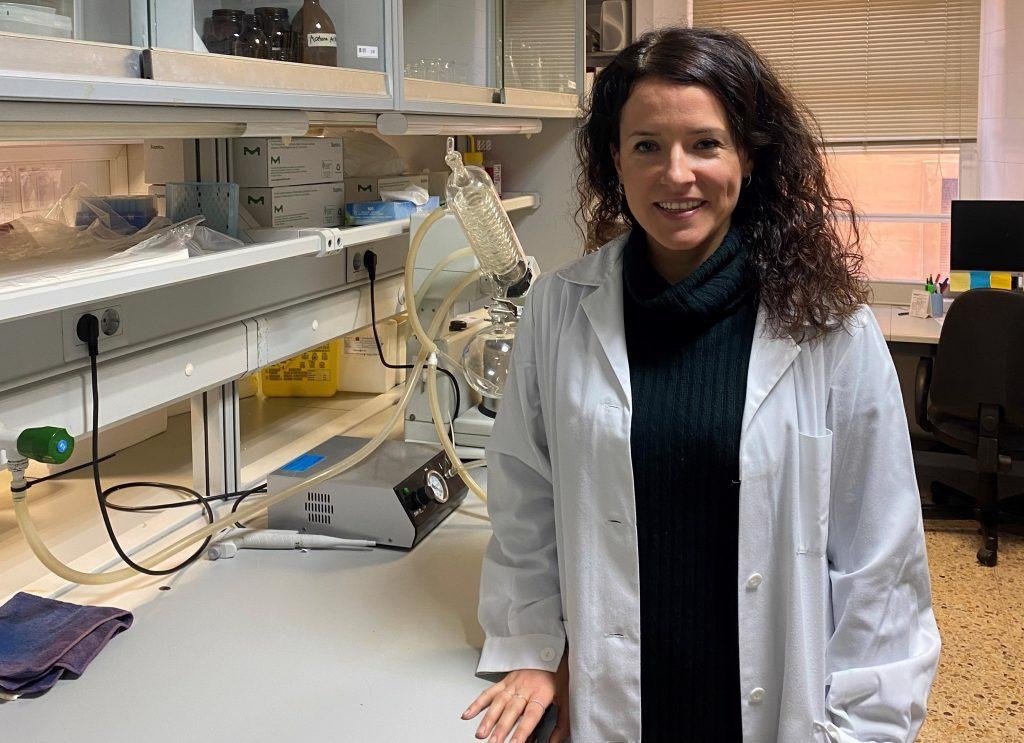According to a new study led by the TecnATox research group from the Universitat Rovira i Virgili (URV) and the Pere Virgili Institute for Health Research (IISPV), air pollution is a key factor in the severity and mortality triggered by the SARS-CoV-2 virus.
 The researcher in the Department of Basic Medical Sciences (URV) Montse Marquès, has led the study. (Image Credit: Universitat Rovira i Virgili).
The researcher in the Department of Basic Medical Sciences (URV) Montse Marquès, has led the study. (Image Credit: Universitat Rovira i Virgili).
Prolonged exposure to particulate matter (PM10) above the WHO threshold — which is mostly the case in large cities — greatly increases the severity and mortality of COVID-19.
PM10 particles are very tiny (ranging from 2.5 to 10 µm in diameter) and suspended in the air. Road traffic is the primary source of emissions. The study, headed by Montse Marquès, a researcher in the Department of Basic Medical Sciences (URV), examined the relationship between the severity and mortality of COVID-19 and prolonged exposure to PM10.
For the period of the first wave of the pandemic, the clinical data of 2,112 patients admitted to 15 hospitals in Catalonia were examined and compared with the PM10 levels recorded by the monitors of the Air Pollution Surveillance and Forecasting Network (Catalan government) in the cities where the hospitals were situated from 2014 until the beginning of the pandemic.
It was determined that COVID was more severe and fatal in people living in areas with a PM10 concentration beyond the WHO threshold.
It was also learned that when an individual is sick with SARS-CoV-2, the course of the disease is established more by prolonged exposure to PM10 than other disorders, such as hypertension, diabetes or hypercholesterolemia, which had become extensively documented risk factors for estimating the severity of infection through a retrospective study applying mathematical models.
Finally, an escalation of 1 µg/m3 in prolonged PM10 exposure was projected to lead to a 3% increase in the number of patients with a chronic case of COVID-19, which can result in more fatalities.
The study’s results have had a substantial effect on the care given to people infected with SARS-CoV-2, a disease that has proved to have a variety of symptoms and to a certain degree erratic prognosis.
Thus far, health care providers have depended solely on medical history to estimate how patients will progress. At present, however, this study has shown the significance of environmental health.
It provides scientific evidence that, when treating patients with COVID-19, the medical community needs to take heed of chronic exposure to toxic environmental pollutants, such as airborne particles, if the advance of the disease is to be properly predicted.
Montse Marquès, Study First Author, Universitat Rovira i Virgili
The study opens the door to examining the role of contamination in other respiratory viruses, such as influenza, and is a reminder that the PM10 limits fixed by the WHO and global legislators need to be appraised and updated to safeguard the health of the population.
The research team that participated in this study believes that the environmental concentrations of PM10 need to be decreased, particularly in those areas where they are above the stipulated limits, so that the severity and fatality of COVID-19, and maybe other respiratory infections, can also be curtailed.
The TecnATox group, headed by Professor Josep L. Domingo, is a world leader in the domain of environmental health and toxicology. For this study, the group has worked in partnership with the Uvasmet group, also from the URV, the IISPV and the STACOV-XULA network.
Journal Reference:
Marquès, M., et al. (2021) Long-term exposure to PM10 above WHO guidelines exacerbates COVID-19 severity and mortality. Environment International. doi.org/10.1016/j.envint.2021.106930.